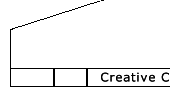 |
 |
 |
|||||||||||||||
 |
 |
 |
 |
||||||||||||||
Topics |
- Continue with AI/A-Life
- Tom Ray, Karl Sims, Michael Joaquin Grey, Gordon Selly (Technosphere), Santa Fe Institute, Creatures,
- Computational evolution
- Genetic programming
- Gordon Selly: Video
- Karl Sims: Video
- Nancy Burson, Natalie Jeremijenko, Iñigo Manglano-Ovalle
- Natalie Jeremijenko: Video
- Cloning: Nightline video or Artificial Life video or Ethics of Cloning video
- Molecular music: DNA music, Nanotech video section
- Cloning: Nightline video or Artificial Life video or Ethics of Cloning video
- Molecular music: DNA music, Nanotech video section
| Reading/Surfing | Assignment | |
|
Final Project/Paper - Rough Draft: Complete a 2 page rough draft of final project/paper. Bring in typed format to class next week, 5/29/03. Note: We will be doing an in-class exercise with these rough drafts. Due May 29, 2003 in class. - NOTE THIS IS A DATE CHANGE Here is a PDF version of the final project/paper assignment and requirements. |
|
Critical Art Ensemble |
Iñigo Manglano-Ovalle |
http://www.macfound.org/programs/fel/2001fellows/manglano_ovalle.htm
http://www.geneart.org/ovalle1.htm
Banks in
Pink and Blue, 1999
mixed mediums, liquid nitrogen, and human semen, dimensions variable (installation
view)
Courtesy of Max Protetch gallery
A gender-selected cryogenic sperm bank, Banks in Pink and Blue consists
of a number of distinct components and agreements integral to the creation
of a sculpture intended to preserve the viability of donated or “lender”
sperm samples in cryogenic suspension for an undetermined period of time.
While each sample is understood to be the property of the lender, the
work functions as a corporate entity and generates appropriate contractual
agreements with individual donors regarding preservation, ownership, and
use of samples, including agreements between donors and the institutions
that preserve and publicly display these samples. The project involves
the contributions of twenty-five to one hundred sperm lenders selected
by the artist as well as the participation of medical ethicists, geneticists,
private biotech companies, lawyers, and legal consultants. Banks in Pink
and Blue brings together disparate concerns of aesthetics, genetics, law,
and ethics, addressing such issues as the possible transfer of sample
ownership from the lender to the corporation or to other individuals.
This installation includes a pair of self-contained cryobanking systems,
the portable repositories known as Dewar flasks used by genetic laboratories,
and commercial sperm banks for the preservation and long-term storage
of specimens in the medium of liquid nitrogen. One of the outer aluminum
shells of these repositories is colored pink, and the other a light blue.
Since the banks must be periodically replenished with liquid nitrogen,
the installation also contains a large stainless steel tank, which is
used to maintain the frozen semen specimens at -321°. The vessels
and the samples they contain are displayed as sculpture in the gallery
setting.
Each lender is provided with a kit containing cryogenic transport media
and instructions for private semen collection. The sample is then shipped
to the artist by overnight air service for centrifugal separation for
gender selection of spermatozoa carrying the Y- or X-sex determinant chromosome.
Each sample is then stored in the appropriate pink or blue cryobank. The
project is investigating the possibility that the art work may have a
predetermined lifespan of twenty years, which would allow for its exhibition
at other venues at future dates.
Manglano-Ovalle’s piece consisted of transforming the bullring in Playas de Tijuana, located next to the border with the US, into a radio telescope in search of aliens. The piece was monumental and minimalist at the same time, and communicated the clear metaphor that is embodied in the title -Search/En Búsqueda. The work functioned at a local level, being at a specific site, while at the same time it was "a global event, possibly cosmic" (Iñigo Manglano-Ovalle). The signals received by the antenna were transmitted via radio, internet, and through loudspeakers around the ring. However, as the artist wrote in his proposal: ´In reality contact with "the real aliens" (at the border or in space) will most likely never happen so the station [...] will probably never transmit a discernible signal. It will only broadcast the sound of "listening" (white noise).�
Nancy Burson |
The Human Race Machine, 2000
computer software and hardware, black formica case and chair
case: 64 x 24 x 48 in. chair: 64 x 24 x 16 in. (detail)
My intention in building The Race Machine was to allow us to move beyond difference and arrive at sameness. When I discovered, while doing research on a project involving genetics, that there is no gene for race, I felt it was one of the most important things to understand about genetics. The DNA of any two humans is 99.97 percent identical. And then The Race Machine became The Human Race Machine. We are all related, all connected, all one.
She with He, 1996 and He with She, 1996 are part of Burson's twenty year undertaking of a profound exploration of the human face. They are morphs of male and female faces, representations of androgyny. Burson preserves the appearance of layering in the morphing process as the apparition of one image is seen through the other. These faces emerge like visitors from another world, or a future time. Androgyny, these pictures seem to be saying, is a state that we, as a species, is evolving into. Burson displays the transformation in mid stream as if we are looking at a hallucination that is being created before our eyes.
Natalie Jeremijenko |